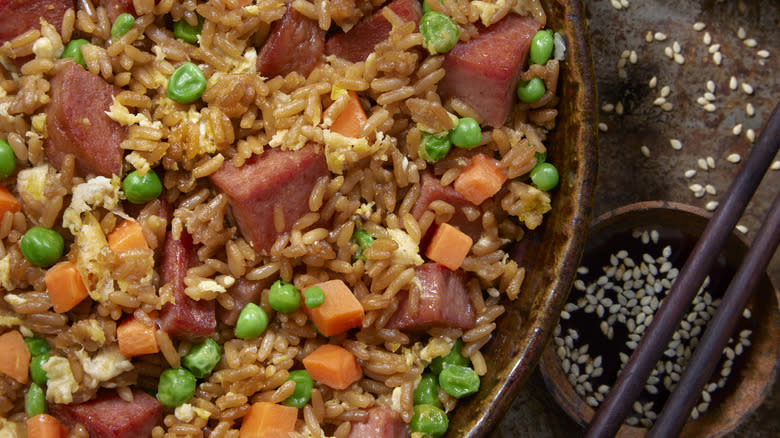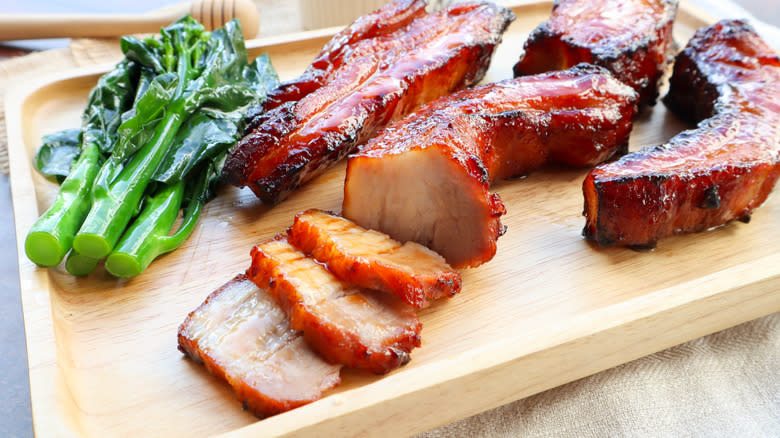Why The Pork In Chinese Fried Rice Is Often Red In Color

Have you ever ordered a steaming takeout box of pork fried rice and wondered why the meat is ... red? It's not because it's undercooked. The pork used in fried rice is typically char siu, a type of Chinese barbecued fried pork with a sweet flavor and crispy red exterior. The red hue on the pork comes from the sticky, crave-able barbecue sauce in which it's marinaded before roasting. Often, this deep crimson hue comes from a combination of Hoisin sauce, ketchup, soy sauce, and fermented red bean curd (aka fermented tofu, bean cheese, or tofu cheese). Other recipes get the scarlet pigment from red yeast rice powder. Some cooks even use red food coloring to really nail the trademark char siu look. Either way, the result is a sweet-savory umami bite with a crispy exterior and tender interior that have kept foodies coming back for centuries.
Char siu comes from the words chā sīu 叉烧 and translates to "fork roasted," a nod to the dish's original preparation method. Cooks of yore would season pork, slice it into long thin strips, and roast the strips over a fire on a skewer. Today, slabs of char siu can often be spotted hanging in the windows of Cantonese restaurants.
Read more: 8 Absolute Best Cuts Of Meat To Deep Fry
It's All About Char Siu

Today, lots of modern Chinese restaurants emphasize char siu's sweetness, but more traditional recipes add an equal amount of spices to balance out the dish's complex profile. Perhaps most commonly incorporated is the classic Chinese five-spice blend of cinnamon, fennel seeds, star anise, cloves, and pepper. Not only is the Chinese five-spice delicious, but it's also a symbolic ode to the five traditional Chinese elements (earth, fire, water, wood, and metal) and the five traditional flavors recognized in Chinese cuisine (salty, spicy, sour, sweet, and bitter). Many cooks keep their unique char siu spice blends a secret, but common ingredients include honey, Shaoxing wine, soy sauce, brown sugar, garlic, and oyster sauce.
Thanks to the fortitude of local restaurants, char siu is just a phone call away. But, to keep this sweet-savory treat on hand, you could make a big batch of char siu in one sitting and then freeze chunks of it for easy access in future recipes. It'll keep for up to three days in an airtight container in the fridge. Frozen, it'll last for a month. A fatty cut of pork (like pork shoulder or pork butt) is ideal for char siu. And fried rice isn't the only way to enjoy this porky beauty. Tuck it into some steamed bao buns; char siu bao is often served on Lunar New Year. Even Japanese chashu pork for ramen borrows its name and recipe from the crimson Chinese dish.
Read the original article on Tasting Table.

 Yahoo News
Yahoo News 
